While attending a major car show this summer, a friend of OnAllCylinders exited his hotel to discover the window smashed out of his vintage car—the result of a failed car theft.
Fortunately, the incident only required some cleanup and a replacement window. Though admittedly that’s not much of a silver lining, it’s still a far better scenario than waking up to an empty parking spot.
Nonetheless, his experience reminded us of the importance of vehicle security, within the specific context of an older car or truck. So for this article, we’ll highlight eight of the most popular methods of vehicle theft prevention.
***
8 Ways to Prevent a Classic Vehicle from Getting Stolen
***
1. Battery Disconnects

Perhaps the oldest tactic for preventing vehicle theft is disconnecting the battery. While this method is pretty easy and cheap to do, there are some drawbacks.
For starters, a disconnect right at the battery usually means you’re disconnecting the rest of your vehicle’s electrical system—which could affect things as trivial as radio station presets, all the way up to your EFI system’s fuel mapping.
In other words, you’re disabling your vehicle’s ignition system, but your also potentially disabling your vehicle’s ECU, door locks, trunk solenoids, and everything else in your car or truck, so this solution may not be for everyone.
But perhaps the biggest drawback of a battery disconnect switch is that it’s often pretty easy for a thief to discover and thwart. So if you’re opting for a battery disconnect solely to prevent theft, we recommend you look to a disconnect system designed specifically for vehicle security—as opposed to a battery disconnect tailored to a different application, like racing or long-term storage. Ron Francis Wiring Safe & Sound Battery Disconnects and Flaming River Big Switch 500 Disconnects are good examples.
***
2. Kill Switches & Hidden Starter Buttons
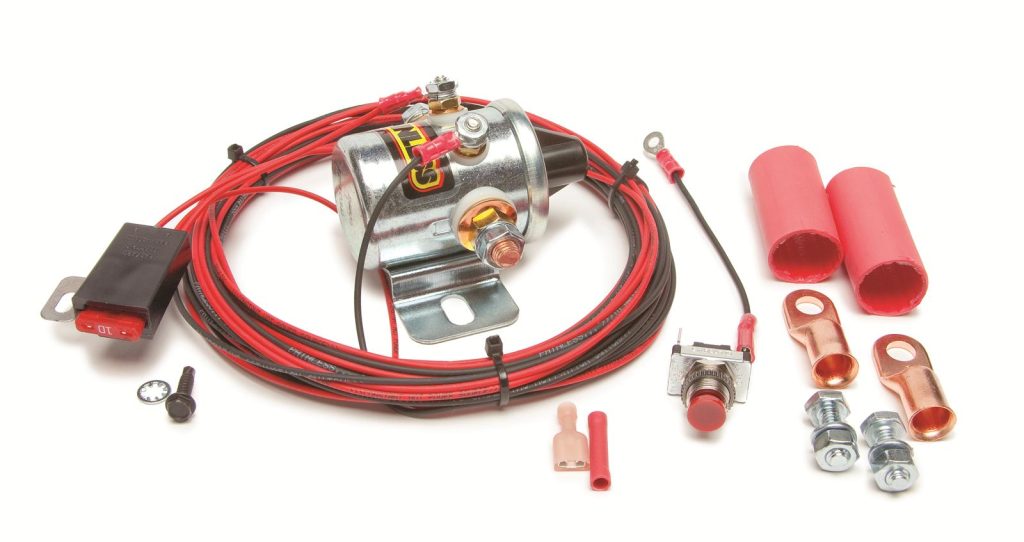
A more sophisticated approach to disabling the vehicle’s engine is via an ignition kill switch (aka a hidden starter button). When disengaged, it cuts power to just the engine’s ignition system, leaving all other electrical circuits intact—like your door solenoids, stereo, and ECU. To start the car, you press the button first to energize the ignition system and then turn the key.
In other words, creating a no-start circuit for your car essentially means that it cannot be started unless you depress a hidden momentary switch first. We’ve seen folks hide the switch inside the car’s cigarette lighter, or behind the dash, or even under the driver’s seat.
To wire one up, you’ll need two 40 amp relays and some wire:

To start the engine, put the key in the ignition and turn it to the RUN position, then press and release the momentary switch. This activates the relay circuit; when you turn the key to the START position, the starter triggers. The momentary switch activates Relay 1, which sends 12 volt positive current from 87 to 86 on both relays to keep the circuit closed after the switch is released. This also powers up Relay 2, which allows current to flow from the ignition switch to the starter. You can get full details on this relay circuit from OnAllCylinders contributor Jefferson Bryant in this article all about automotive relays.
It’s also worth mentioning that there’s a similar hotrodder’s trick to prevent the theft of an older vehicle: Simply pull the lead wire from the ignition coil. In many cases, the rubber boot from the ignition wire can still rest on the coil terminal without making contact, which means unless the thief if savvy enough to do impromptu ignition system diagnostics, they’d never determine the no-spark condition from a quick visual inspection of the engine bay.
***
3. Car Alarms
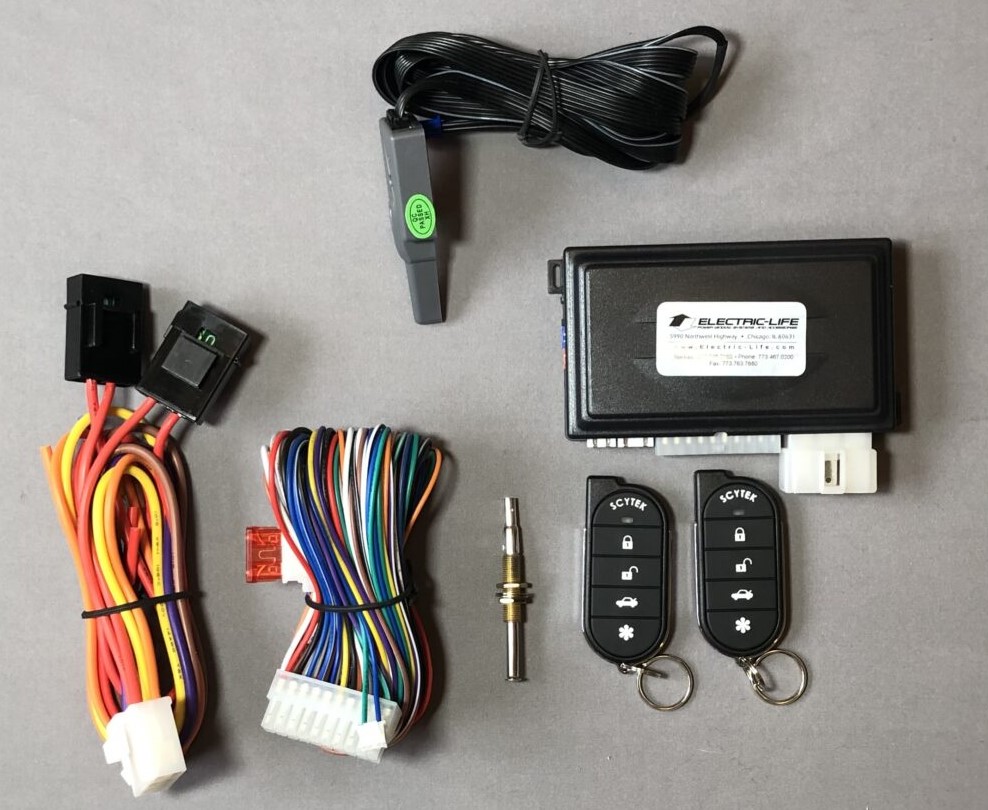
Perhaps the most advanced method for preventing vehicle theft is a dedicated vehicle alarm system. Now there are multiple types of vehicle alarms in the market, some work by detecting things like proximity or shock, while others use some form of a sensor or fob to “authenticate” the vehicle’s rightful owner.
It’s beyond the scope of this article to weigh the pros and cons of the dozens of car alarm models available nowadays, so you’ll have to assess your needs to determine which car alarm system will work best for your particular vehicle. But in our experience, many are pretty straightforward to install, provided you’ve got a bit of automotive know-how beforehand.
As an added bonus, a lot of car alarms incorporate a remote-start feature too, which might be handy for folks in exceptionally warm or cold climates.
We’re particularly fond of the iKey system from Digital Guard Dawg, which essentially creates a digital “bubble” around the vehicle. If the sensor detects the special key fob, then the ignition system is ready–if it doesn’t, the car simply won’t start. Read more about the Digital Guard Dawg and iKey here.
***
4. GPS Tracking Devices
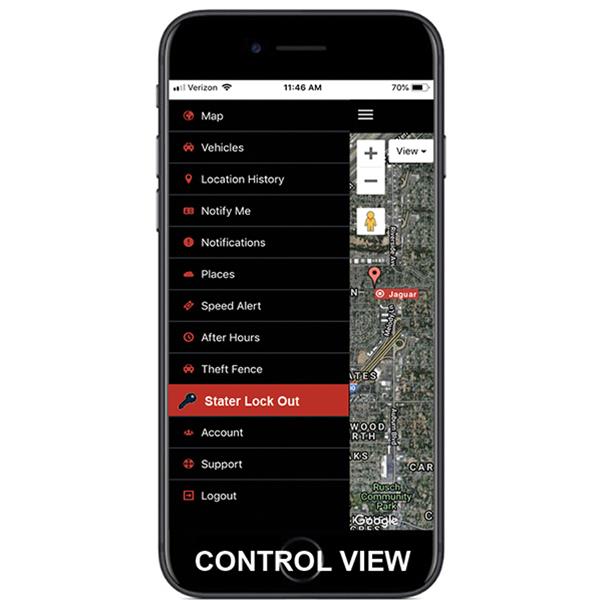
Though they’re extremely popular for trailers nowadays, we’re seeing GPS trackers used more and more in the classic vehicle world. While systems differ, these GPS tracking devices commonly wire into the vehicle’s 12V power and essentially allow you to monitor the location of the vehicle via an app on your phone.
Some systems offer an array of advanced features too, including speed alerts and satellite tracking that works anywhere on the planet.
In short, while they are incredibly valuable tools for recovery, thanks to real time monitoring and lockout features, GPS tracking devices have plenty of value as a preventive theft deterrent too.
***
5. Quick-Disconnect Steering Wheels

Often found on race cars and dedicated off-roaders, a steering wheel quick disconnect can be a powerful deterrent for would-be car thieves. As the name implies, a steering wheel disconnect allows you to quickly remove the vehicle’s steering wheel, so you can carry it with you—or simply lock it in the trunk, away from prying eyes.
As you’d imagine, this isn’t a solution for everyone, but if you’ve got a spartan vintage car, kit car, or stripped-down roadster that’s short on features (and perhaps even 12V power), a removable steering wheel might be an option worth exploring.
***
6. Hood Locks
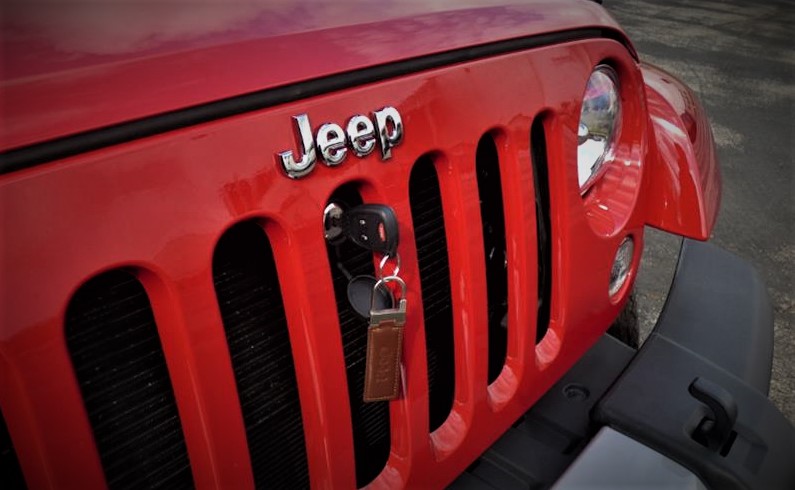
For the owners of Jeeps, classic convertibles, or any other vehicle with easy access to the hood release mechanism, a Hood Lock is often a vital component of vehicle security—and that’s especially true when used in conjunction with the aforementioned battery disconnect switch.
And even beyond total vehicle security, a hood lock is a smart way to keep vandals from snooping around your engine bay, particularly if you’ve got a unique feature like a rare air cleaner cover or other unobtanium original part.
***
7. Replacement Ignition Lock Cylinders & Key Cores
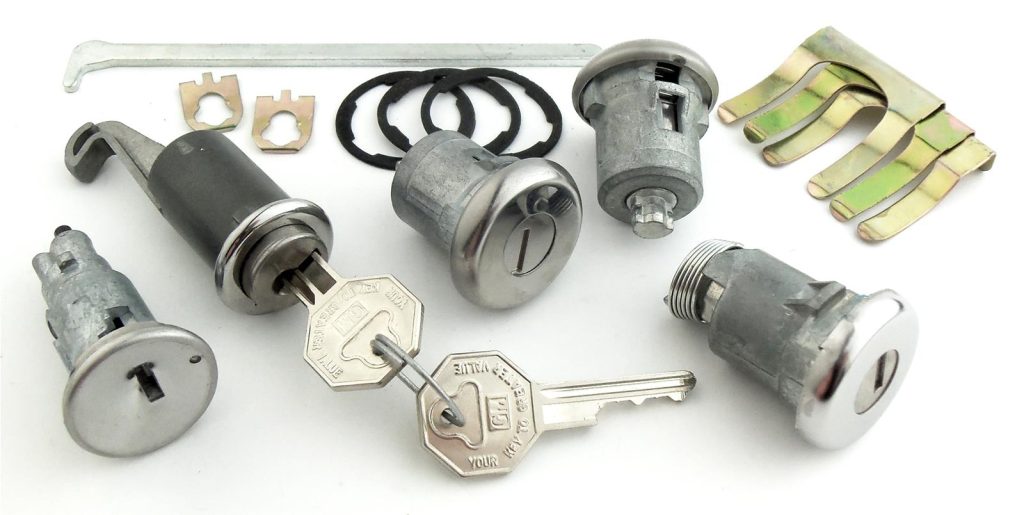
This might be an obvious one, but it’s worth mentioning anyway: Swapping your worn-out door and ignition locks for a new set of reproduction ones might be a smart idea too. Decades of jiggling key cycles have a tendency to wear-down the tumblers inside the lock itself, which means a stab-n-twist with a well-placed screwdriver might be all it takes to get the engine fired and steering wheel unlocked on your old car.
And if your glovebox door or trunk lock is busted (or missing entirely), then adding a fresh set of locks is a no-brainer too—remember, deterrence is a big part of the battle here and you don’t want a criminal to spot a big hole where the factory lock would’ve been.
***
8. Steering Wheel Locks
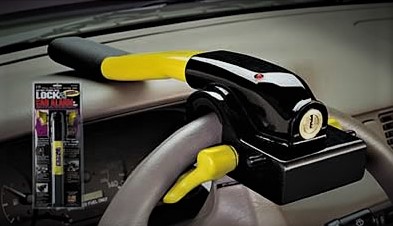
No discussion on vehicle security is complete without talking briefly about steering wheel locks. Anecdotally, we’ve heard mixed results with the various configurations of these designs. While they can be a bold visual deterrent for an amateur, most sophisticated burglars (IE, the type to covet a vintage muscle car or exotic) will likely be prepared to thwart these types of locks.
***
And since we’re all about tribal knowledge here, if you have any car theft prevention tips, tools, or techniques to share with us, please let us know in the comments section below—this is a vital topic that benefits the entire gearhead community.

The absolute best kill switch is a toggle switch wired between ground and something like the main ignition feed or fuel pump circuit, AFTER the fuse. If the switch is armed when whatever circuit it’s in is powered up, the fuse blows and the circuit remains inop until somebody replaces the fuse, something a car thief just is not going to spend time investigating. When the switch is disarmed the circuit works just like normal. The kill switch doesn’t necessarily even need to be hidden; if no one but the legitimate owner knows what position it needs to be in for the car to run it really doesn’t matter all that much where the switch is.
If you are parked at a motel parking lot, what are the best ways to prevent a car thief from just grabbing your car with a tow vehicle, and hauling it away. Any tactics or techniques (maybe in addition to a car alarm) that would thwart this?
Yeah, the rollback truck (or for us bike folks, a full size van) is always a threat. That said, some folks I’ve talked with use proximity/motion sensor-based car alarms that will trigger when the vehicle is moved. Also, whenever possible, I try to be strategic with parking spot choice–IE, well lit, monitored, and in a relatively tight spot where a rollback would have trouble accessing.
…
We alluded to it above, but GPS tracking is also a smart deterrent and can help immensely during recovery.
In a pinch pull the coil wire or ignition wire. Thief’s will not take the time to find the problem. Also block the car in at events or hotels.
Alarms in many cities go ignored as it a common sound too often.
I do like the hidden kill switch. I used to see one that needed a magnet applied to the dash where it would let the car start. These were very effective.